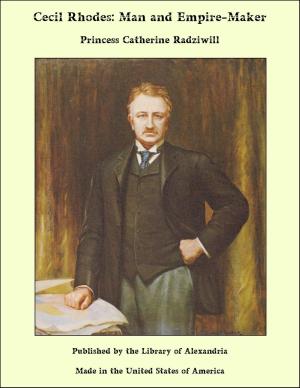The Religion of the Koran
Nonfiction, Religion & Spirituality, New Age, History, Fiction & Literature| Author: | Arthur N. Wollaston | ISBN: | 9781465540850 |
| Publisher: | Library of Alexandria | Publication: | March 8, 2015 |
| Imprint: | Language: | English |
| Author: | Arthur N. Wollaston |
| ISBN: | 9781465540850 |
| Publisher: | Library of Alexandria |
| Publication: | March 8, 2015 |
| Imprint: | |
| Language: | English |
The Koran.—As the sacred volume of some 170 millions of the present inhabitants of the world, the Koran possesses an interest and importance which well merit, and will amply repay, attention and study. To the pious Musulman it is the very Word of God, the true rule of life, and the source of all his hopes for the future. It is universally allowed to be written with the utmost elegance and purity of style, though, of course, as the standard of the Arabic tongue, it scarcely comes within the pale of grammatical criticism. But, apart from this, it would be difficult to surpass the eloquence and beauty of its diction, and well may Muhammad have disclaimed all power of working miracles, trusting to the sacred Book itself as evidence of his mission from on high. That the Koran was really the work of the Prophet of Arabia is beyond dispute, though it must be left to conjecture whether, and to what extent, Others participated in his design. Pious Muslims, however, would have it believed that was of divine origin, and revealed to Muhammad on various occasions, sometimes at Mecca, and sometimes at Madina, during a period of twenty-three years. After the passages had been set down in writing by his scribe from the Prophet’s mouth, they were published to his followers, some of whom took copies, more or less incomplete, for their private use, but the far greater number learned them by heart. The originals when returned were placed promiscuously in a chest, where they remained in a state of confusion till the time of Abu Bakr, the Khalif or successor of the Prophet (A.D. 632-634). By his direction they were collected and additions made of those portions which had not previously been committed to writing. Matters remained in this condition till A.D. 652, when Othman, who was then Khalif, ordered a great number of copies to be transcribed from the compilation of Abu Bakr; with emendations by specially selected scholars, and dispersed this new edition throughout the Empire, in place of the old collections, which were thereupon suppressed. It may interest the curious to learn that of the seven principal editions of the Koran which were subsequently prepared, two were published and used at Madina, a third at Mecca, a fourth at Kufa, a fifth at Bussorah, a sixth in Syria; while the seventh became the common or vulgar edition throughout the land. The first printed edition appeared in Arabic at Venice in A.D. 1530, under the direction of Pagninus of Brescia. The Pope of Rome, however, was alarmed, and by his orders all the copies were committed to the flames. The next complete Arabic edition was published at Hamburg (A.D. 1649) under the auspices of Hinkelmann.
The Koran.—As the sacred volume of some 170 millions of the present inhabitants of the world, the Koran possesses an interest and importance which well merit, and will amply repay, attention and study. To the pious Musulman it is the very Word of God, the true rule of life, and the source of all his hopes for the future. It is universally allowed to be written with the utmost elegance and purity of style, though, of course, as the standard of the Arabic tongue, it scarcely comes within the pale of grammatical criticism. But, apart from this, it would be difficult to surpass the eloquence and beauty of its diction, and well may Muhammad have disclaimed all power of working miracles, trusting to the sacred Book itself as evidence of his mission from on high. That the Koran was really the work of the Prophet of Arabia is beyond dispute, though it must be left to conjecture whether, and to what extent, Others participated in his design. Pious Muslims, however, would have it believed that was of divine origin, and revealed to Muhammad on various occasions, sometimes at Mecca, and sometimes at Madina, during a period of twenty-three years. After the passages had been set down in writing by his scribe from the Prophet’s mouth, they were published to his followers, some of whom took copies, more or less incomplete, for their private use, but the far greater number learned them by heart. The originals when returned were placed promiscuously in a chest, where they remained in a state of confusion till the time of Abu Bakr, the Khalif or successor of the Prophet (A.D. 632-634). By his direction they were collected and additions made of those portions which had not previously been committed to writing. Matters remained in this condition till A.D. 652, when Othman, who was then Khalif, ordered a great number of copies to be transcribed from the compilation of Abu Bakr; with emendations by specially selected scholars, and dispersed this new edition throughout the Empire, in place of the old collections, which were thereupon suppressed. It may interest the curious to learn that of the seven principal editions of the Koran which were subsequently prepared, two were published and used at Madina, a third at Mecca, a fourth at Kufa, a fifth at Bussorah, a sixth in Syria; while the seventh became the common or vulgar edition throughout the land. The first printed edition appeared in Arabic at Venice in A.D. 1530, under the direction of Pagninus of Brescia. The Pope of Rome, however, was alarmed, and by his orders all the copies were committed to the flames. The next complete Arabic edition was published at Hamburg (A.D. 1649) under the auspices of Hinkelmann.















